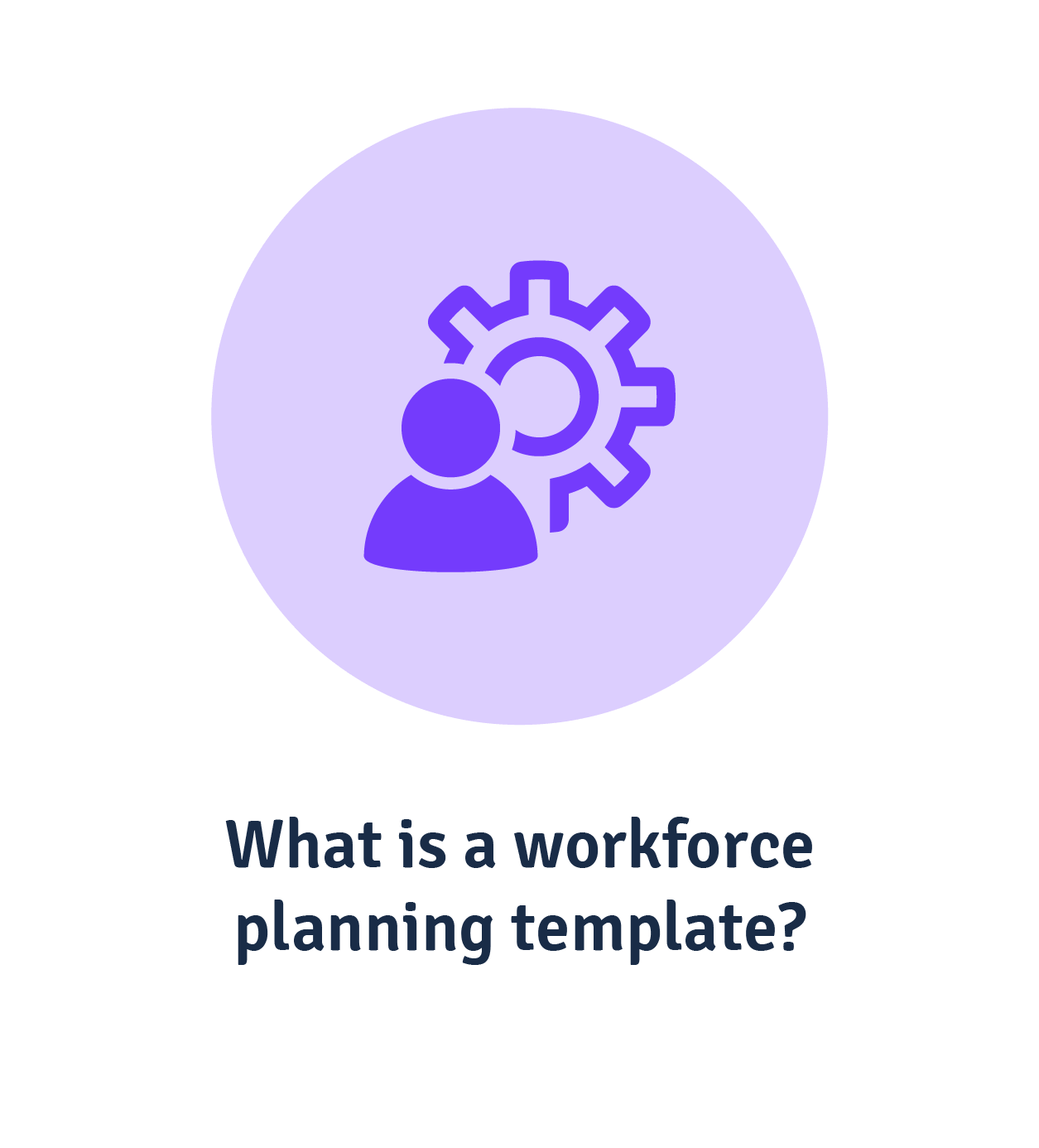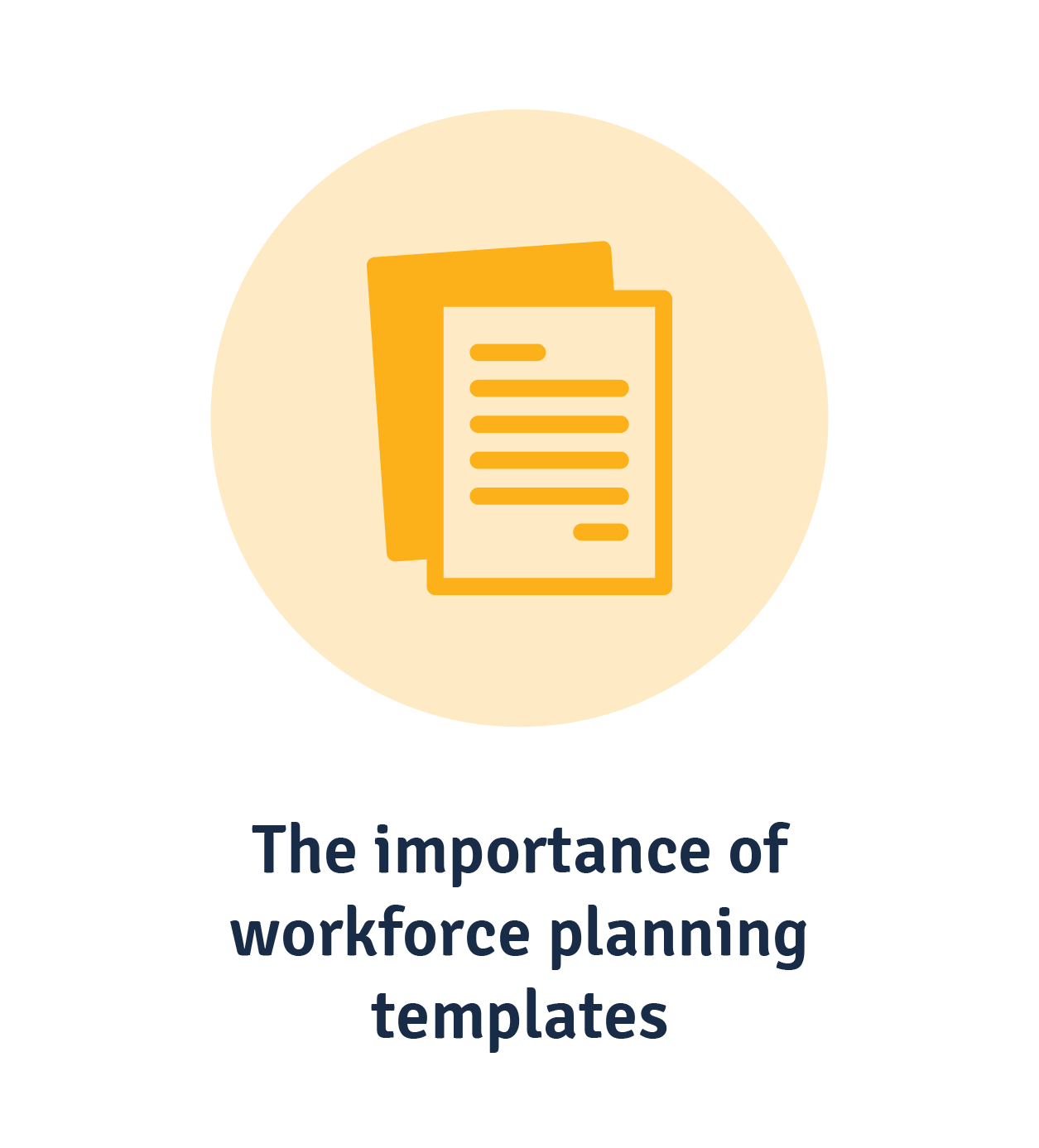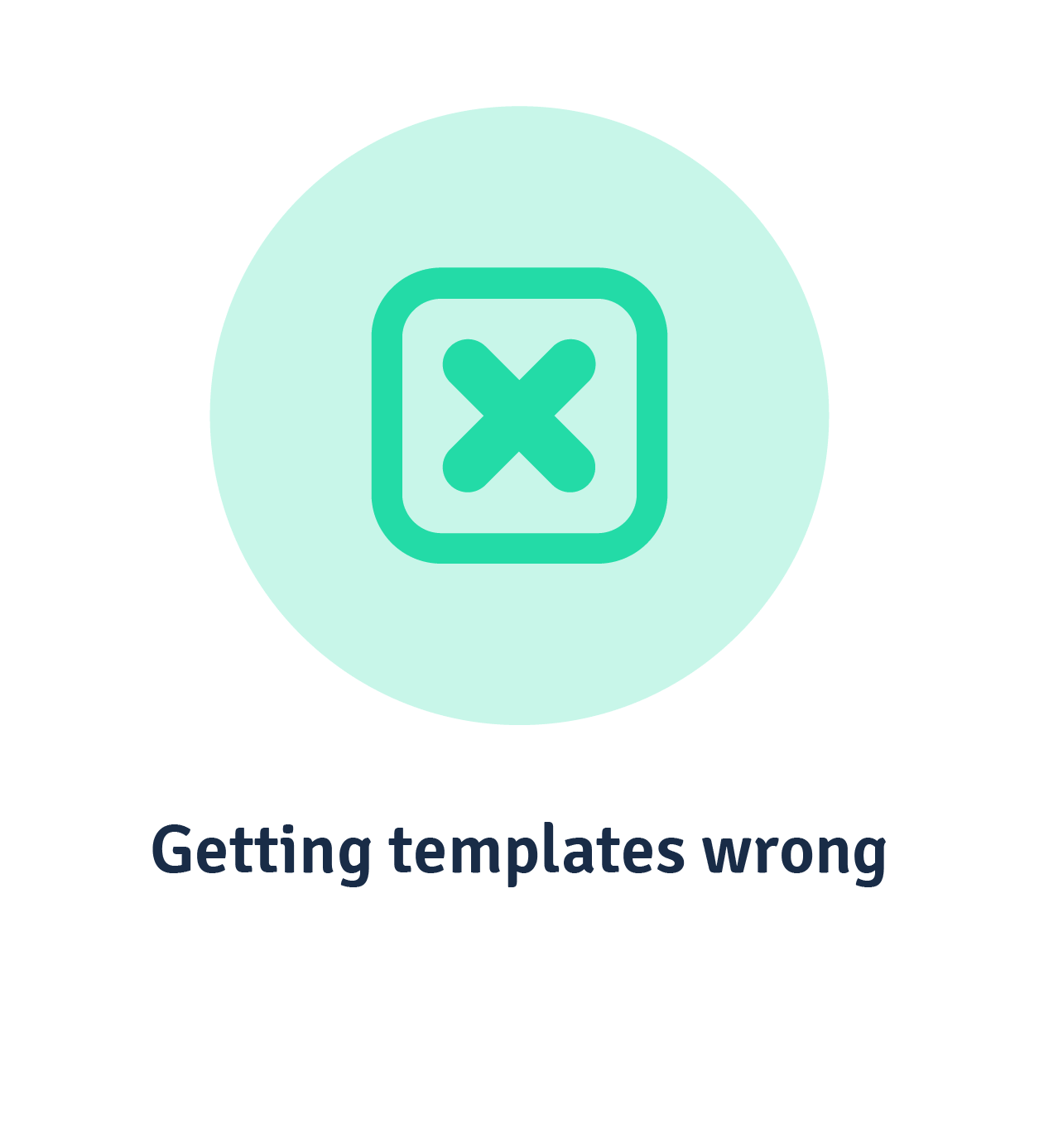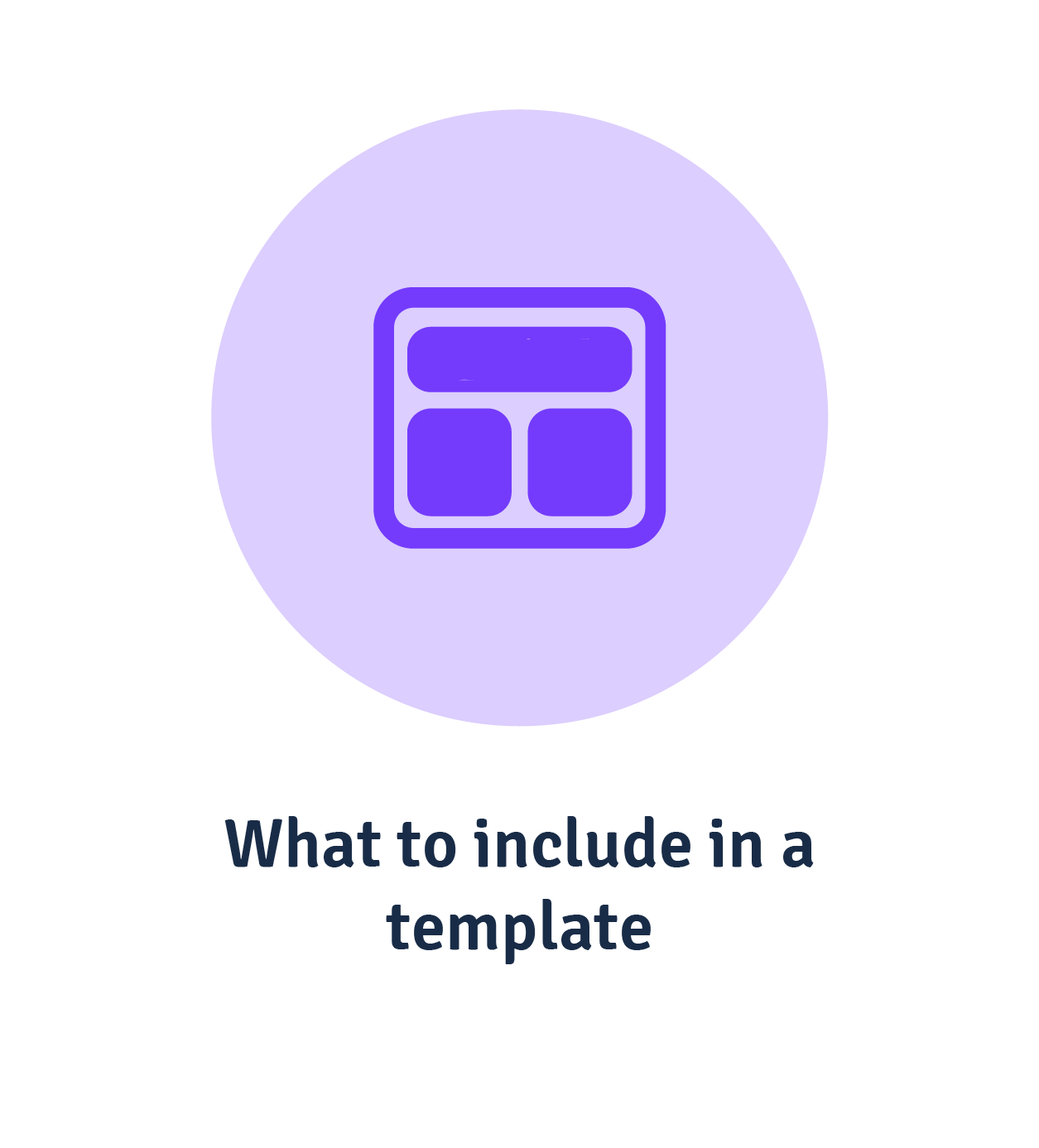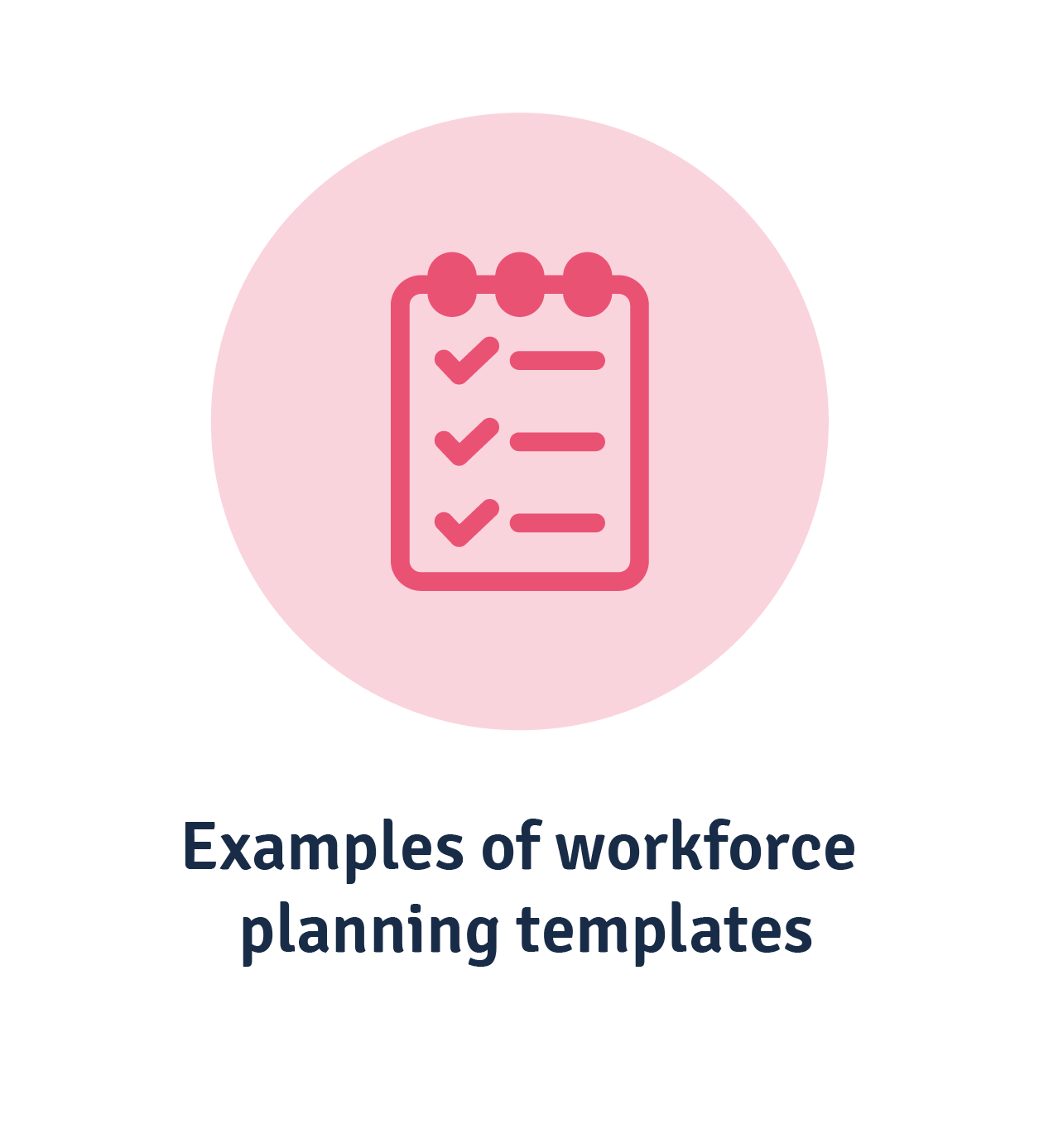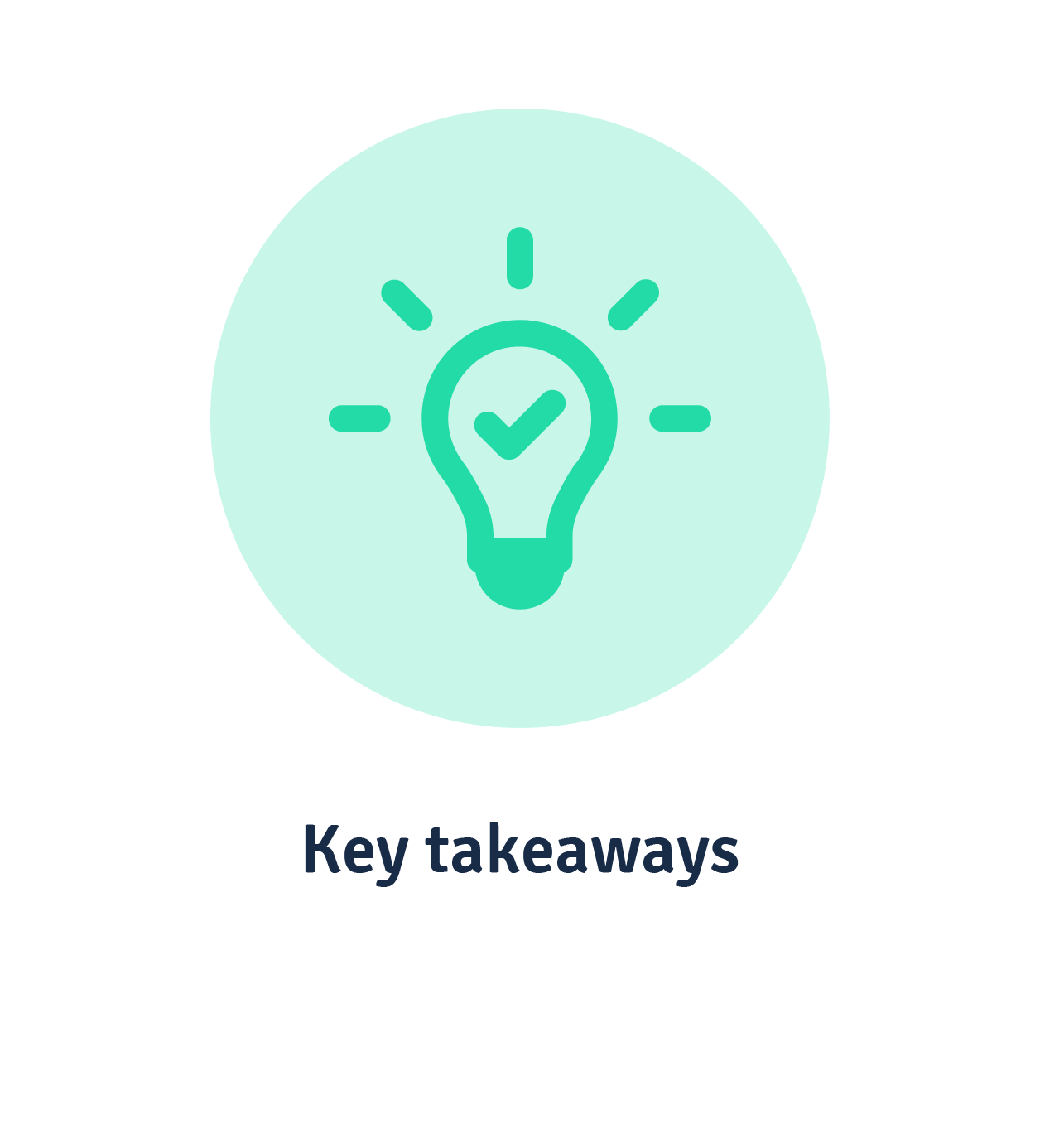How Can a Strategic Workforce Planning Template Help Grow Your Business?
By now you’ve heard of workforce planning, what it is and why you should be using it to grow your business. But one thing you’re probably still wondering is how you can make the process of workforce planning less overwhelming. Well, this is where you might find a workforce planning template to be useful.
In this article we’ll discuss how a workforce planning template can be used in your workforce plan to help you grow your business. If you already know about workforce planning templates, don’t sweat it. We’ve got some examples of workforce planning templates for you to look at below.
What is a workforce planning template?
A workforce planning template is a guide that provides a framework for your workforce planning (WFP) process. It outlines the different steps of the WFP process, which steps need to be included and what order you need to perform them in. In short, a WFP template is a tool you can use to assist your WFP in your organisation.
The importance of using a workforce planning template
Whether your workforce planning is a largely manual process or you prefer to automate and digitise it, you’ll find that a template can be helpful through the process. It provides:
- A framework
- A focus
- A repeatable process.
At Acorn, we’ve pioneered the first performance learning management system (PLMS) to help automate these processes and drive business impact. A PLMS is a dynamic, AI-powered platform that synchronises L&D and WFP activites to organisational performance, enabling your employees to become impact players in your wider business strategy.
Let’s get into what each of these benefits mean in more detail.
The workforce planning template as a framework
People new to leading a workforce planning project might find the first stages to be overwhelming. It isn’t hard to imagine why when you look at the vast scope of workforce planning and what bases should be covered. Luckily, a workforce planning template provides you with a comprehensive list of all the aspects of workforce planning that needs to be investigated.
The workforce planning template as a focus
As we mentioned above, a workforce planning template gives you a comprehensive list of different metrics to include in your WFP. This gives you something that may be hard to find—especially for first timers—without a template to guide you: Focus. A WFP template will clearly lay out what you need to be analysing in your WFP, and this pre-organised setup will make it easier for you and your HR leaders to focus on the specifics of WFP in detail.
The workforce planning template as a repeatable process
The thing about workforce planning is that it’s an ongoing process. You can’t just do it once and be done with it for good or expect your implemented actions to continue to help with business performance for years into the future. While the market and available workforce change, the questions posed in a WFP template remain the same. This means you can save time and reuse a WFP template for your organisation each time you go through the workforce planning process.
How organisations use workforce planning templates wrong
Of course, using a workforce planning template can come with some drawbacks.
- General use
- Rigidity
- Manual labour.
Workforce planning templates for general use only
People looking to make use of templates in their workforce planning can find an abundance of options freely available on the internet. (We have some examples further down in the article.) But while the templates are certainly useful to help you with your planning process, they tend to be “general use” templates. That is, they aren’t tailored specifically for your business, or perhaps even your industry. While it’s still possible to find free industry-specific workforce planning templates, you’ll want to tailor them further so your organisation can make the most out of it.
The rigidity of workforce planning templates
One thing you may notice if you use general workforce planning templates is just how rigid they are. While the process can seem easier with all the questions and metrics laid out in front of you, it can also make the process so much more inflexible. This is another area that can be helped by tailoring templates to your organisation in order to allow for “individual freedom”, so to speak.
Workforce planning templates requiring manual labour
One thing that many off-the-shelf workforce planning templates have in common? Multiple pages of blank space for you to write to WFP questions. While this is a great way to keep your thoughts organised, it also requires a lot of manual labour. It can be easier to use automated processes or software that incorporate WFP templates to be more efficient in terms of time, effort and cost.
How to implement a template in your workforce planning process
Understanding the benefits a template has for your workforce planning is one thing, but how do you actually implement a workforce planning template? And, on top of that, how do you implement a WFP template in an effective way to avoid the potential pitfalls?
A template is a step-by-step guide to performing WFP from start to finish, so it goes without saying that you should include one in your WFP process from the beginning. It’s true that a lot of workforce planning templates you can find for free are laid out with the assumption you’ll be doing workforce planning manually, but that doesn’t mean you can’t adopt a template for an automated process.
The workforce planning template as an automated process
If you prefer to automate your workforce planning, a template can still be of help to you. Just like in manual WFP, workforce planning software also uses a template as a framework, but this time the gathering and analysing of crucial data is automated for you. This not only takes the stress out of the process for you, but also speeds it up and ensures better analytics.
What steps are included in a workforce planning template?
So, you know what a workforce planning template is, what it does, how it benefits your business, and how you can implement it. But we haven’t looked at what’s actually included in a workforce planning template yet. Let’s take a look.

Because a workforce planning template covers all the necessary steps needed, it goes without saying that those steps cover the entire workforce planning process. Let’s get into the details of stakeholder identification and workforce planning step-by-step.
1. Stakeholder identification
If you want your workforce planning to be effective, efficient, and result in good outcomes not just for your business performance but also your workforce, investors and suppliers, you’ll want to include your stakeholders in the process. This part of the template focuses on analysing and identifying which stakeholders should be included, consulted and collaborated with on your project.
2. Strategic direction
Your strategic direction will include your goals, objectives, and desired outcomes for your business. Essentially, it’s the direction you want your business to end up in, or be heading towards, after implementing your WFP solutions.
3. Supply analysis
This is where you look at your current workforce in terms of supply, such as what skills your workforce has, how big your workforce is and what roles your workforce fulfils.
4. Demand analysis
A demand analysis is like a supply analysis but set in the future. Given the future you want (which you have outlined in your strategic direction) consider what your business needs in that future scenario. How many employees would you have, what roles do they fill and what skills do they have?
5. Gap analysis
This is where you look at the “gaps” between your current and future workforce. Skills gaps, talent gaps, development gaps—you name it. This step requires you to look at what you need that you don’t already have and vice versa, so you know what will need to change in order to meet your business objectives for the future.
6. Solution implementation
Once you’ve figured out the gaps, you can figure out how to close them. This is where you come up with solutions to help you reach your future workforce goals, and then implement those solutions.
7. Monitor progress
The last step in a workforce planning template is to monitor progress. We mentioned before that workforce planning is not a one-off occurrence, and we weren’t joking. You need to make sure that the solutions you come up with during the workforce planning process are working, and—if they aren’t working—you need to figure out why and how to fix it. At the same time, you need to understand that the market is constantly changing, and solutions that work for you now may not work in ten years’ time.
Effective workforce plan example templates
If you want to check out some examples of workforce planning templates, we’ve compiled a few examples below.
- Jobs Queensland’s workforce planning template can be viewed here.
- The workforce planning template by California Department of Human Resources downloadable here.
- A strategic workforce planning toolkit and template by Warwickshire County viewable here.
- Workforce planning template for schools by Victoria State Government downloadable here.
Key takeaways
Workforce planning may seem like an overwhelming undertaking to begin with, but you’ll find that the process is much smoother and more efficient with a workforce planning template. This is especially true for a template that can be used to automate your processes and take pressure off the backs of your project team.
There are many options out there for workforce planning templates, whether it be templates tailored to your business to be carried out manually, or software to help organise and analyse your data for you. Either way, you’ll find your workforce planning process much improved with a framework to guide you through the project.
Related Reads on This Topic

Your Training Evaluation Report Template & How to Use It
Get your free downloadable training evaluation report template, as well as a full guide on how to analyse training impact…

A Look at the Workforce Planning Process
Just what is the workforce planning process and how does it ensure effective workforce planning in your organisation? Read more to find out…

The 30-60-90 Day Management Plan: A Template for Success
The 30-60-90 day management plan plays an important role in guiding employees to successfully integrate into their job role…
